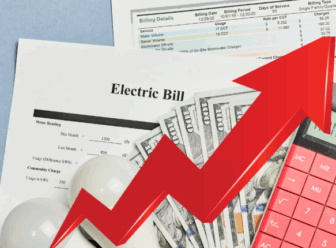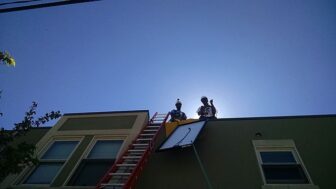By Mike Tidwell
So you’re a lawmaker in Annapolis, with November’s election safely behind you. But the voices of working families and struggling consumers are still ringing in your ears: “We need help!” What’s a leader to do?
The Maryland state budget is facing a shortfall of more than a billion dollars, meaning reduced services ahead for many citizens. And cutting state taxes, while an admirable impulse, would just sink the budget further, dooming thousands of state workers to layoffs while endangering popular services ranging from libraries to parks. What about federal help? Forget it. The prospect of a second round of significant stimulus spending got dashed Nov. 2.
So if you want to create jobs and help consumers, what’s left?
Here’s what: Build a wind farm. More specifically, lawmakers in Annapolis should direct the state’s slow-moving utilities to finally invest in offshore wind energy. Doing so would not require a nickel of state money, but it would create thousands of jobs, incentivize new manufacturing, and help stabilize painfully volatile electricity prices in our state. Ocean-based wind mills would also save scores of Maryland lives and billions of dollars otherwise lost to the state economy from the rising menace of climate change.
Thankfully, all signs suggest a major offshore wind bill is going to emerge from the General Assembly session that begins next week, with the confirmed support of the leaders in the House and Senate. It’s time now for Gov. Martin O’Malley, a proven leader on green energy, to make the bill part of his legislative package.
First, the jobs. No other industry in Maryland is poised to create as many jobs as the offshore wind industry. Placing a collection of modern windmills 10 miles off the coast of Ocean City (barely visible from shore and safe for birds) would create nearly 5,000 new jobs, according to the Maryland Energy Administration. In-state manufacturing of the turbine parts — a very real prospect — has led the United Steelworkers of Maryland to support wind power. After all, offshore turbines are 400 feet tall and are 90 percent steel by weight.
Electricity ratepayers would also benefit enormously from offshore wind. That’s because wind companies can offer lots of power at a price that’s fixed for up to 25 years. The “fuel” is free, after all. Like a mortgage, you simply amortize the construction cost of the wind farm over 25 years. It creates predictability, stability and affordability for consumers.
Fossil fuel-based power plants, by contrast, can’t offer long-term fixed prices because the fuel costs — oil, coal, natural gas — fluctuate wildly. With two-thirds of our electricity coming from these dirty sources in Maryland, we’ve been energy “renters” for decades, riding the rollercoaster of our “landlord” utilities. Just in the last decade we’ve seen our electricity rates rise more than 75 percent. Isn’t it time to stop renting and start locking in to the stable, guaranteed price of abundant offshore wind power?
But wait — isn’t wind power more expensive than fossil fuels? No. Wind power is cheaper. If you factor in the life-cycle costs of a new power plant fueled by coal, oil or natural gas — and you include the measureable negative impacts on human health and the highly likely impacts of climate change — offshore wind is the clear marketplace winner.
Recent studies by the University of Maryland, for example, show the state and region could lose billions of dollars and thousands of jobs to global warming from sea-level rise, droughts and bigger storms by 2100 (all driven by fossil fuel use worldwide). And a 2007 study involving Harvard University noted that Delaware would lose 200 lives and spend more than an extra $1 billion in future health-related costs if the state chose dirty energy over offshore wind. Finally, even without factoring in health and climate variables, a landmark study in Delaware found that based on conventional costs, offshore wind power was the best choice for the state.
So what’s holding things up here in Maryland? If the life-cycle price is attractive and jobs will be created, why aren’t offshore wind farms being built now? The answer goes back to the energy “renter” issue. Utilities in Maryland don’t like to sign 25-year contracts for energy, preferring to “speculate” on short-term energy prices in markets dominated by fossil fuels.
To fix this, the Maryland General Assembly should, as a first step, require utilities to obtain at least 3 percent of their total electricity from offshore wind farms, with the power purchased through fixed, 25-year contracts. Wind industry observers say this modest requirement, phased in over the next few years, is enough to get a major offshore wind farm constructed with the potential for nearly 5,000 new Maryland jobs.
Last month, a federation of leading environmental groups in Maryland voted to make offshore wind power a top legislative priority for 2011. During the election campaign, Mr. O’Malley declared offshore wind to be one of his top economic priorities. Now it’s time for Mr. O’Malley and the General Assembly to make it happen. Consumers and conservationists — representing voters of every stripe — are ready to finally tap into Maryland’s great, windy energy future.
Mike Tidwell is executive director of the Chesapeake Climate Action Network. His e-mail is mtidwell@chesapeakeclimate.org.




